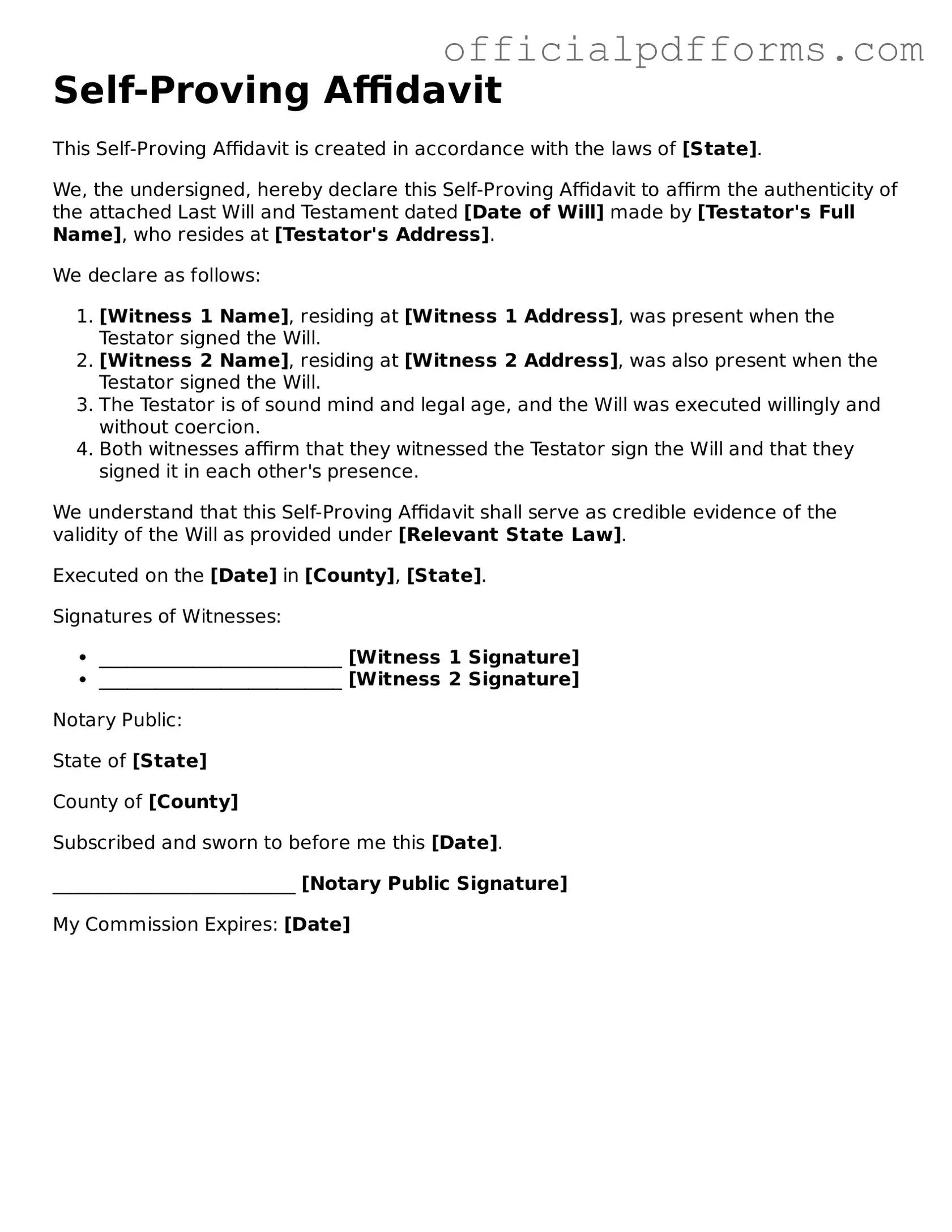What is a Self-Proving Affidavit?
A Self-Proving Affidavit is a legal document that accompanies a will. It serves to validate the will by confirming that the testator (the person who created the will) signed the document in the presence of witnesses. This affidavit is typically signed by the testator and the witnesses in front of a notary public. The purpose of this affidavit is to simplify the probate process by eliminating the need for witnesses to testify about the will's authenticity.
Why should I use a Self-Proving Affidavit?
Using a Self-Proving Affidavit can streamline the probate process. When a will includes this affidavit, it reduces the likelihood of disputes regarding the will's validity. Additionally, it saves time and resources by negating the need for witnesses to appear in court. This can be particularly beneficial for families who want to avoid lengthy legal proceedings during an already difficult time.
Who can sign a Self-Proving Affidavit?
The Self-Proving Affidavit must be signed by the following individuals:
-
The testator, who is the person making the will.
-
At least two witnesses who observed the testator sign the will.
-
A notary public, who verifies the identities of the signers and witnesses.
All signers should be of legal age and mentally competent at the time of signing.
How do I create a Self-Proving Affidavit?
To create a Self-Proving Affidavit, follow these steps:
-
Draft the will, ensuring it meets your state’s legal requirements.
-
Include a Self-Proving Affidavit section at the end of the will.
-
Gather your witnesses and a notary public.
-
Sign the will in the presence of your witnesses.
-
Have your witnesses and notary public sign the affidavit.
It is advisable to consult with a legal professional to ensure the affidavit complies with state laws.
Is a Self-Proving Affidavit required?
No, a Self-Proving Affidavit is not required for a will to be valid. However, including one can significantly ease the probate process. Without it, witnesses may need to testify in court to affirm the will's legitimacy, which can complicate matters. While not mandatory, it is often recommended for those who want a smoother probate experience.
Self-Proving Affidavit forms can be obtained from various sources, including:
-
Legal stationery stores.
-
Online legal document preparation services.
-
State bar association websites.
-
Consulting with an attorney who specializes in estate planning.
Ensure that the form you choose is compliant with the laws of your state to avoid issues during probate.
